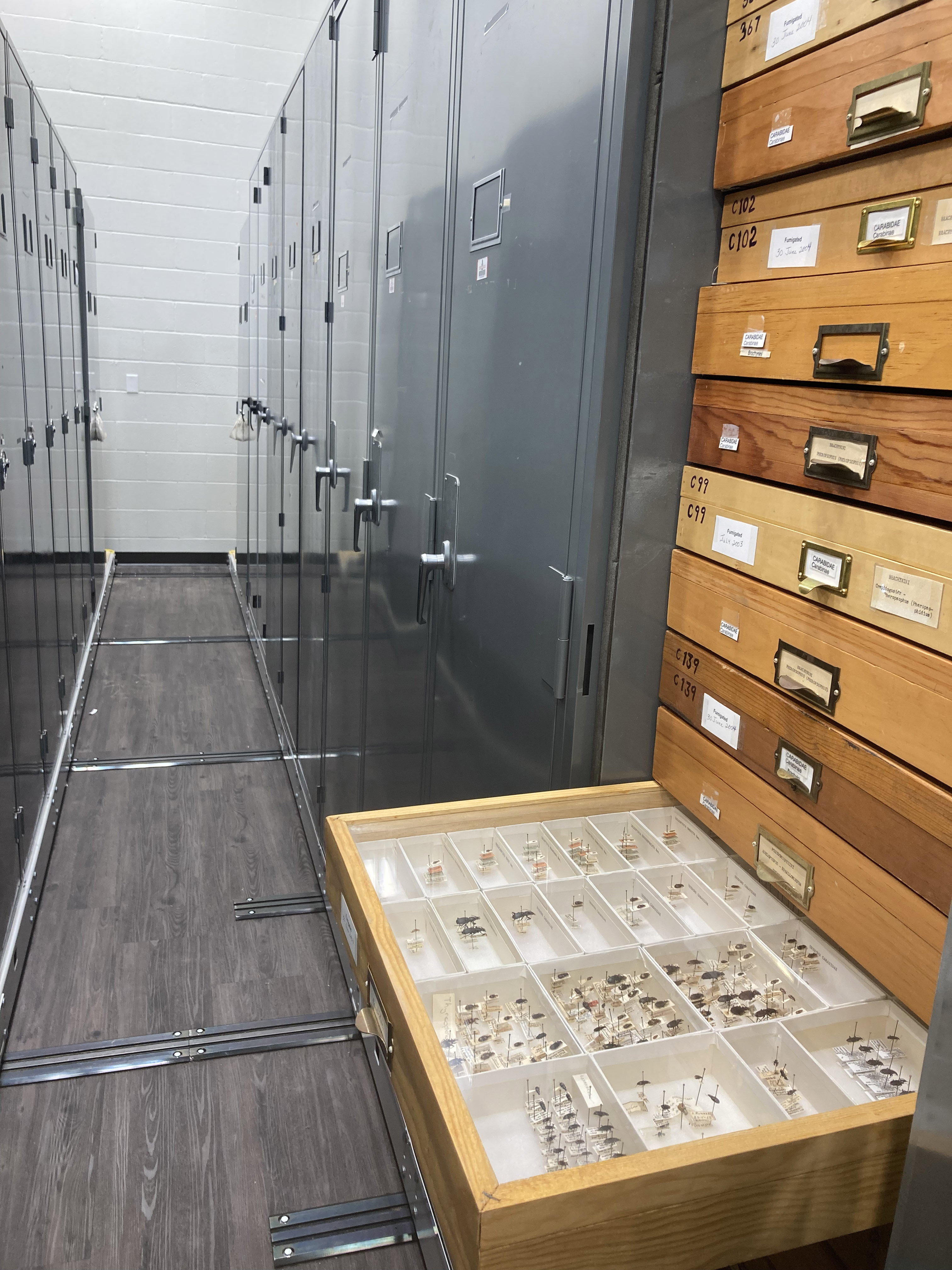Arthropod Museum and Stuff
Contact
University of Arkansas System Division of Agriculture
Cooperative Extension Service
2301 S. University Ave.
Little Rock, AR 72204

Arthropod Museum and Stuff
I’m in the process of moving. Downsizing in a major way. Thousands of people move every day, so the process should be straightforward and easy. It’s not. Having lived in my home for almost 30 years, I’ve accumulated lots of treasures. Some big, some small and all with some kind of meaning attached.
Moving necessitated breaking up and finding a home for my lifetime collection of books, about 2,000 volumes. This is hard, but still doable once you accept the fact that people will accept valuable books if you give them away. For me it is like finding a good home for a pet you can no longer care for. That they are cared for and appreciated is all that matters.
In the midst of this, I just finished reading Bert Holldobler and E.O. Wilson’s Journey to the Ants. This got me thinking about some of the entomologists who were housed just down the hall from my office at the University of Arkansas, especially those in charge of the Arthropod Museum. By definition, a museum is a curated collection of stuff. In this case, hundreds of thousands of pinned insect specimens lined up in little wooden boxes.
There is a class structure in the academic world. Every researcher thinks his or her work, if not the most important, at least the most interesting. But when the rubber meets the road, hard sciences and anything associated with DNA manipulation, are currently at the top of the heap. Near the bottom of the pile are those associated with taxonomic classification, especially if it involves old-school approaches based on what an organism looks like.
This has not always been the case. Two centuries ago, scientists primarily focused on gathering in specimens from all corners of the globe and arranging them into recognizable groups based on shared characteristics. But times change and studying classification became to be despairingly viewed as mere “stamp collecting” for biology. Then, about 30 years ago DNA analysis became cheap and easy and biologists began looking at the cookbook of life to determine biological relationships.
This brings me back to all that stuff – the 750,000 pinned insect and spider specimens – housed in the Arthropod Museum. Why should they be kept when you could take some high-resolution digital images, match that to the DNA profile, and make all that information available on line?
The answer, or so it seems to me, is that a physical thing is worth preserving. Whether it be books, dusty old records, pinned insects, plant voucher sheets, rock samples or bird nests, some instruction must take it upon themselves to preserve these touchstones of our social and academic past. In biology, preserving specimens is especially important because only a tiny fraction of tissue plastids (chloroplasts, mitochondria) is being tested to assess relationships. To do the entire genome, other than for a few special cases, is still beyond practical reach for most organisms.
Fortunately, the University of Arkansas has just relocated the Arthropod Museum and the Botanical Herbarium collection to an edge-of-campus location where National Science Foundation grants have helped provide state-of-the-art storage facilities for the specimens. Several insects find insect collections and herbaria sheets attractive feeding grounds, so the new facilities can be sealed up tightly and treated to prevent outside attacks. Researchers occasionally add new specimens to the Arthropod Museum as it relates to their current research project, but at the moment the museum is being used as a part of the University outreach program to show school children and interested adults this tangible slice of academia.
As for all my stuff, I’ve come to grips with the fact that I can’t continue to house all of my “House of Wonder” possessions, so they have to go. Sure, a few treasures will make the move with me, but what I can’t get rid of in my pending estate sale, have a future home in a nearby landfill. Like a true museum collections manager, the stuff I accumulate in the future will be part of a curated whole, just not more stuff. I promise.
